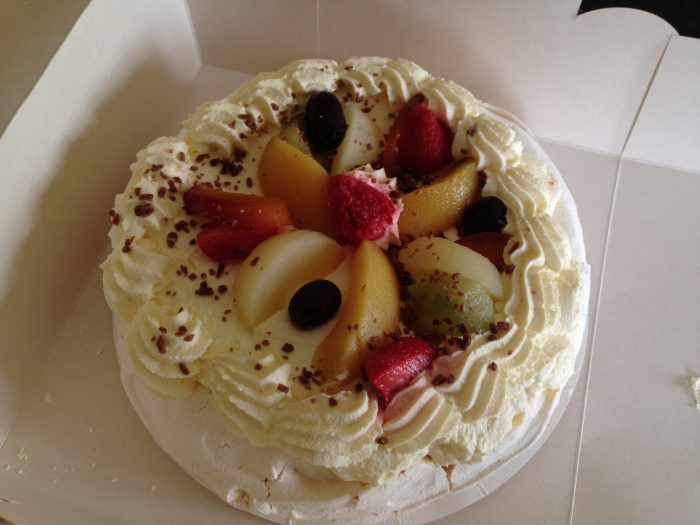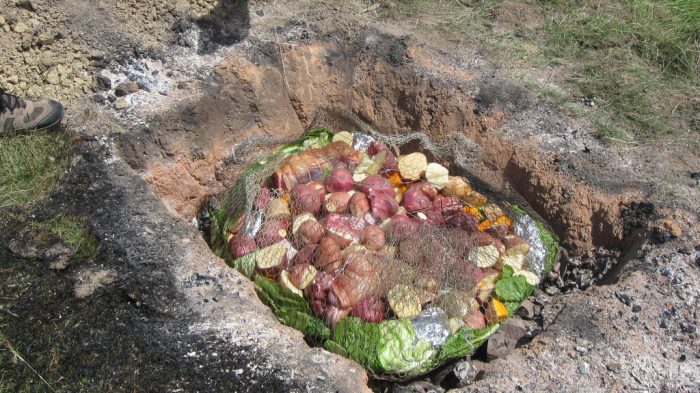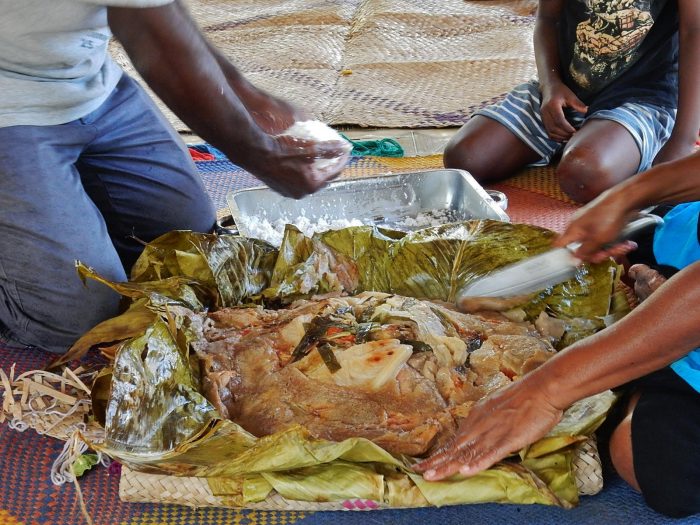6 Inspiring Dishes from Oceania
Oceania is usually not the first place that comes to mind when people think of food across the globe. It does not have to be that way as many countries created their distinct and delicious dishes. From Australia to Fiji, this article covers some of the best for you.
Pavlova (Australia)
Australia’s cuisine is generally highly influenced by different styles around the world. Historically, especially Great Britain and Asia are some of the key influences on today’s food in the country. Australians added their own noticeable touch ever since and perfected their menus. One of the national dishes is a meringue-based dessert called Pavlova.
A crunchy crust is covering the soft centre of the Pavlova. That softness is what makes the dish significantly different from traditional meringue. Pavlova itself is quite easy to prepare, making it a perfect dish to serve when awaiting guests. For example, during holidays such as Christmas, you will often be able to find it on people’s tables. It tastes best freshly refrigerated and decorated with whipped cream and fresh seasonal fruits.
The origins cannot be pinpointed. Recent studies from Australia and New Zealand suggest that the first version of the dish existed in Germany, before it was brought over to America and finalized in Australia to reach its current form.

Credit: Sean Macentee
Māori hāngī (New Zealand)
A hāngi is an extremely traditional way to cook food, dating back over 2000 years. In Māori culture, the food used to be cooked using heated rocks. Everything was then buried in a pit oven. Nowadays, people still enjoy all sorts of ingredients with the same method, including chicken, pork, vegetables and many more. Following several hours, the food will be lifted back up from the ground. However, to reduce time and effort, gas heated stainless steel machines are more frequently replicating the style these days.
The exact variation of each family hāngi is handed to younger generations along the years. New Zealanders perfected their creation to the maximum by even paying attention to the exact shape of stone. Early settlers from Polynesia have recorded a large number of such pit ovens as early as the mid 1200s.
In case you would like to experience the Māori hāngi for yourself, you are in the right place in Rotorua. The North Island town offers guided tours and whole evenings to show visitors the traditions and foods of the natives. The full evening will cost you under $100.

Credit: Sarah Stewart
Coconut Tuna (Tuvalu)
On the small island of Tuvalu, there are far less foreign influences compared to the bigger states such as Australia. Despite being occupied by the British for a short period of time, Tuvalu’s favourite food is the coconut. Just like New Zealand, there are impressive pits found across the country. Due to their geographic position, surrounded by the Pacific Ocean, seafood is found on the menu quite often. Locals like it due to their protein content.
A highly popular dish in Tuvalu is Coconut Tuna. To prepare it, people use wild caught Yellowfin or Ahi tuna steaks. Other main ingredients include hot chili peppers including the seeds, unsweetened coconut milk, onions and further fresh products, such as cilantro or parsley. Since the main product of the dish is often caught by the people that make it, the price is not very expensive. As a tourist, you get a guaranteed fresh dish for a decent price as well.
Lū (Tonga)
Compared to previous times, when only one main meal was served around midday, times in Tonga have changed. After preparing an earth oven every day back then, Tongans are now unable to do so while working their regular jobs during the day. Nowadays, cooking is done by women, predominantly over open fire in their villages. Tongans now enjoy breakfast, a relatively light lunch and the richest dish for dinner.
One of the most traditional dishes includes Lū, the edible leaves of the taro plant. Prepared mainly on special occasions and Sundays these days, it contains meat, onions and coconut milk wrapped in taro leaves. Afterwards, it is being wrapped further with a banana leaf and cooked in a pit oven. Tongans have different names for each version of it, depending on the ingredients. From beef to lamb and from chicken to horse, you can find just about anything locally.

Credit: Wikimedia
Laplap (Vanuatu)
83 islands belong to Vanuatu, yet it is still a country left to its roots. Native people called Ni Van have remained very much in the picture and inhabit about 15 of them. Their influence also shows in the food sector. Vanuatu’s national dish is called Laplap. It is made by pounding breadfruit, taro leaves or yam roots into a dough. After adding further ingredients such as coconut cream, pork, beef or more adventurous ones such as flying fox, the whole mixture is being cooked in an underground oven.
Locals love their creation and markets around the country are being filled with stalls selling Vanuatu’s most famous dish for affordable prices. After travelling to the markets early on, women are selling it to various people on their lunch break. These trucks and buses are packed with people and ingredients required to cook everyone’s favorite dish.
Credit: Michael Koghan
Lovo (Fiji)
Fiji’s specialty is called lovo. Special events such as Christmas, birthdays or even funerals serve as the right place for lovo. Locals enjoy it because of the smokey BBQ flavor that stems from the preparation of the dish. For example, no oil is being used while cooking. It leaves the lovo as a very healthy alternative compared to other dishes in the region.
Meats or fish are marinated in sauces and garlic to start with. They are then wrapped in foil. The same is being done with taro. Just on special occasions, the whole dish is being cooked underground. It also includes a so-called palusami. Taro leaves, coconut cream, canned meat and onions are being mixed with spices and wrapped in foil. Everything is covered with banana leaves and cooked for three hours.
Underground master class
As you can tell by the six given examples, a lot of oceanic people love to cook their food underground. Those traditions often date back to way back when natives used these methods in their daily battle for survival. If you should ever receive the chance to get a taste of some local oceanic food, you should definitely take it. It is worth it!
